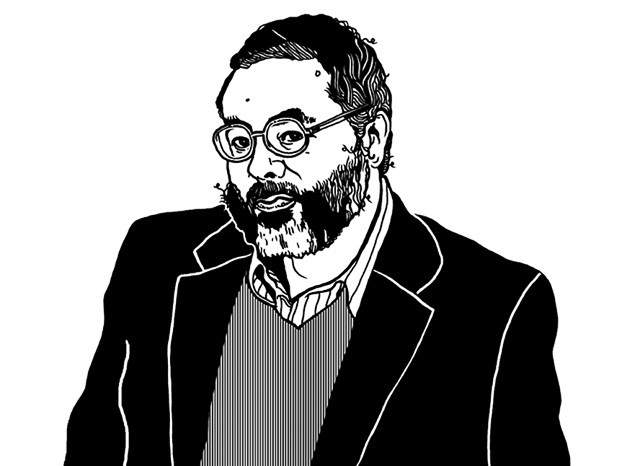Illustration by Daniel David Freeman
Peter Turchin is a Russian-American scientist who specializes in population biology and devises theories, backed by cumulative scientific evidence, that, in their essence, predict the future by tracking “temporally varying processes and the search for causal mechanisms” throughout history. He calls his field of study “cliodynamics,” after Clio, the Greek Muse of history, and it’s been getting a lot of attention lately following an article about his research in the science journal Nature.
Videos by VICE
Peter’s work suggests that peaks of violence in the US work on a 50-year cycle, with the next state of upheaval set to hit humanity in 2020. It’s sort of like that 2012 Mayan-apocalypse nonsense, except Peter’s theory is the result of the hard work of a modern, living, and well-respected scientist rather than something hippies like to talk about while taking heavy psychedelic drugs. We spoke to Peter to find out what’s supposedly going to make the US descend into a horrifying, dystopian pit of violence in eight years’ time.
VICE: Can you humor me and explain your cliodynamic theory of violence in layman’s terms?
Peter Turchin: Sure. Historical studies show that society goes through long-term cycles of violence: There’s a build-up for roughly a century, then a period of violence, or upheaval, for ten or 15 years. Then people get tired of it and the next generation goes back to being peaceful. It’s then the grandchildren of that generation—who never experienced the severity of upheaval firsthand—who are likely to start causing problems again. My theory suggests that it will be 2020 when the US hits a new peak of violence.
What does the term “violence” include in regard to your theory?
There are three distinct kinds of violence that I’ve included in my research. Firstly there is “groups on groups,” which, in the case of modern-day America, would be riots. Then there is “groups against individuals,” which would be lynchings and that kind of thing. Lastly, there is “individuals against groups,” which are what we call rampage killings. We’ve seen a very fast rise recently in that last one. It’s where one person mows down a group of people by himself, which is essentially terrorism, but it’s not referred to as that here because it’s American-on-American violence.
Like the Dark Knight shooting, for example?
Yes, exactly. Things like Columbine, Virginia Tech, and the Timothy McVeigh bombing might be better examples, because rampage attacks are usually directed toward large institutions, like the educational system or government. Those kinds of incidents have grown over the last generation by a factor of 20 or so.
In your view, what causes these upheavals?
Historically, the trouble has always come from people with power, and the number of those people who want the most power. There are too many political entrepreneurs who are all trying to get power, and they get frustrated, which is how revolutions start: when members of the elite try to overturn the political order to better suit themselves.






